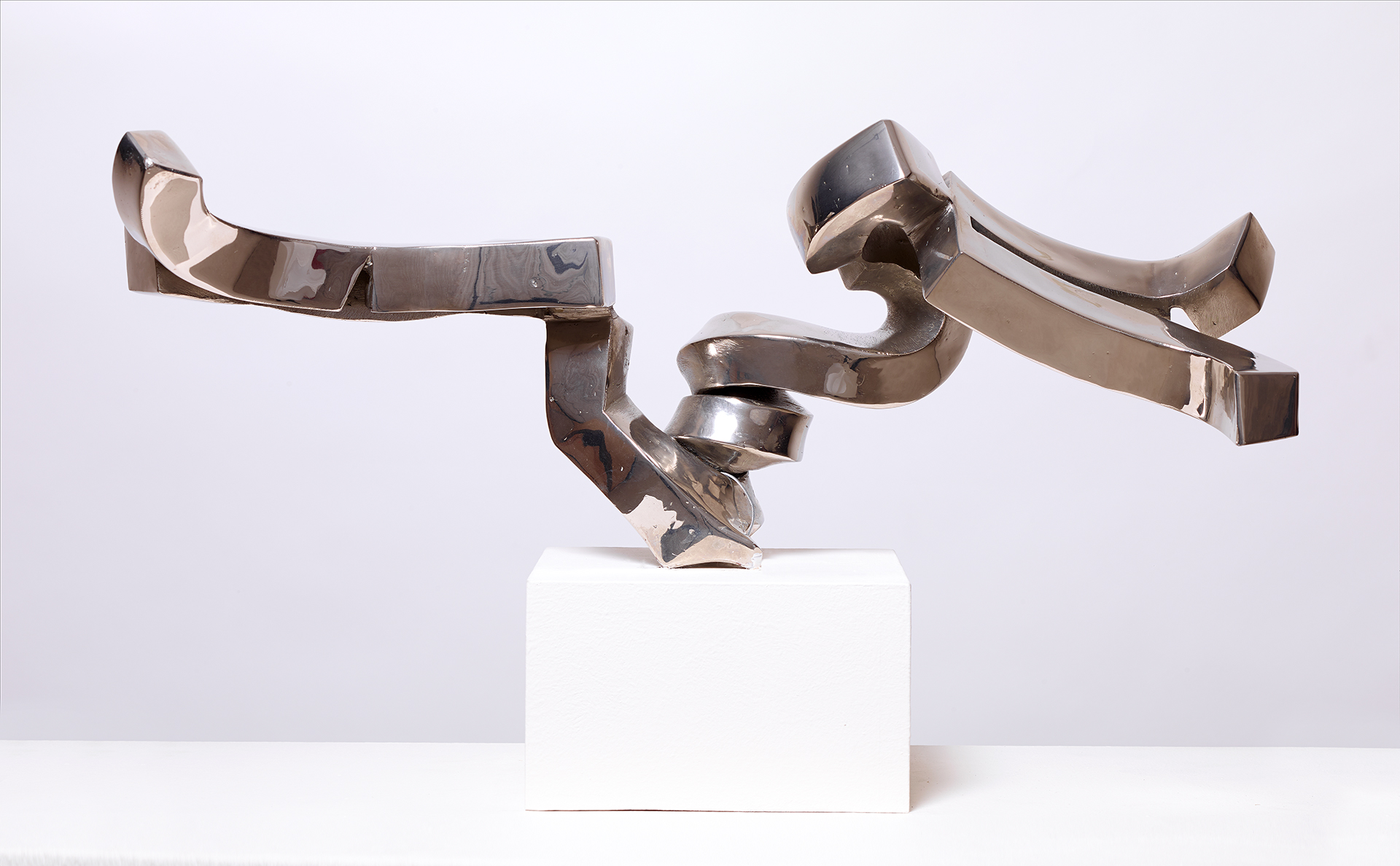
Martín Chirino (Las Palmas de Gran Canaria, 1925-2019)
Root (40)
1967
WORK INFORMATION
Iron and chrome steel, 23 × 63.5 × 20 cm
Martín Chirino was born in Las Palmas de Gran Canaria in 1925, into a family with long-standing ties to the shipyards in La Luz Port. This family tradition allowed him to become skilled in the use of tools from an early age and ushered him into a world that instilled a wonder and passion for ironwork and woodcarving. These circumstances played a decisive role in the sculptor's career, for the two factors that best define his work are constant references to his homeland, whose ancient culture had a powerful influence over him, and the use of wrought iron as a medium of artistic expression, a form of craftsmanship rooted in Spanish tradition which Chirino, as Antonio Saura remarked, managed to synthesise with the latest spatial preoccupations.
At age 23, Chirino left for Madrid to study at the San Fernando School of Fine Arts. After completing his education, he embarked on a period of investigation into iron and Spanish blacksmithing. Chirino joined the El Paso group in 1958. After the exhibition New Spanish Painting and Sculpture at the Museum of Modern Art (MoMA) in New York, Chirino visited the United States regularly and frequently. Starting in the 1970s, he created monumental projects inspired by the wind spiral, a vestige found in the legacy of the first settlers of his native Canary Islands, and continued his research into African values. Today he is a prestigious icon of Spanish abstract sculpture.
Between 1982 and 1992 he served as president of the Fine Arts Circle of Madrid, and from 1989 to 2002 he was director of the Centro Atlántico de Arte Moderno in Las Palmas de Gran Canaria. He has received a number of major awards and distinctions, including the International Sculpture Prize at the Budapest Biennale, the National Visual Arts Prize, the Canary Islands Visual Arts Prize, the Gold Medal for Fine Arts, the National Sculpture Prize from the CEOE, the Medal of Honour of the Fine Arts Circle of Madrid, and the 2003 Visual Arts Prize from the Regional Government of Madrid. Chirino holds honorary doctorates from the University of Las Palmas de Gran Canaria and Nebrija University in Madrid, and in 2014 he was made an honorary fellow of the Royal Academy of Fine Arts of San Fernando in Madrid.
Raíz (40) [Root (40)] is highly representative of Chirino's "informalist" period, in which the artist reflected on the nature of sculpture and allowed the material—in this case iron—to dictate the final form. Following the trail blazed by Julio González, the sculptor aims to slenderise the form, reducing material to the absolute minimum so that the weightlessness of matter makes the sculpture metaphorically take flight.
His roots are seemingly abstract works, but they allow the artist to articulate his socio-political concerns in a modern language. The twisted forms of these sculptures are drawn from traditional tools, yet at the same time they symbolise the necessary harmony with the earth, the constant quest for our roots. These pieces stand on solid ground but only at one point or perhaps a bit more, just enough to remain upright. The iron bar sidles along the plane, twisting, rising, spiralling, narrowing, achieving an undulating horizontality that refers us to the artist and his native landscape, to the sea and the undulating skyline. [María Luisa Martín de Argila]

